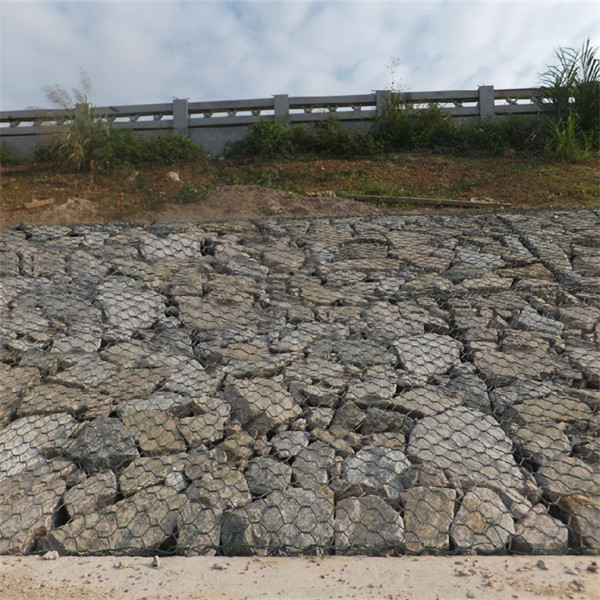Nov . 05, 2024 11:45 Back to list
best gabion erosion control
Best Gabion Erosion Control A Comprehensive Guide
Erosion control is a critical concern for anyone managing land, whether it be for agriculture, construction, or conservation. One of the most effective methods for combating erosion is the use of gabions. These sturdy, wire mesh containers filled with rocks or other materials provide both structural integrity and aesthetic value to landscapes. This article delves into the best practices for using gabions in erosion control, highlighting their benefits, applications, and installation tips.
What Are Gabions?
Gabions are wire mesh cages filled with stones, rocks, or other materials. Originally used in military applications for fortifications, they have evolved to serve multiple purposes in civil engineering and landscaping. Designed to withstand water flow, the weight of the stones inside provides stability, making them ideal for erosion control along riverbanks, hillside slopes, and other vulnerable areas.
Benefits of Gabions for Erosion Control
1. Durability Gabions are highly durable and can last for decades. The wire mesh is usually made of steel coated with zinc or polymer, which resists corrosion and environmental degradation. This longevity minimizes the need for frequent replacements or repairs.
2. Cost-Effectiveness Compared to traditional concrete walls or other erosion control methods, gabions are relatively inexpensive. The materials used to fill the gabions can often be locally sourced, further reducing costs.
3. Environmental Compatibility Gabions blend seamlessly into natural landscapes. The use of natural stones in gabions allows vegetation to grow through the mesh, promoting habitat for wildlife and enhancing the ecosystem.
4. Versatility Gabions can be used in a variety of applications, including streambank stabilization, slope protection, and even as retaining walls in construction projects. Their versatility allows them to meet different project needs effectively.
Applications of Gabions
best gabion erosion control

1. Streambank Stabilization Gabions are particularly effective along riverbanks where water erosion is prevalent. By placing gabions at strategic points, they can absorb the kinetic energy of flowing water, reducing the impact on the soil.
2. Slope Protection Areas susceptible to landslides or soil erosion can benefit significantly from gabion walls. These structures provide additional weight and stability to slopes, holding back soil and preventing collapse.
3. Bridge Abutments Gabions can be used to support bridge abutments by creating a solid foundation that withstands water flow and shifting soils, ensuring the longevity of the structure.
4. Retaining Walls In landscaping, gabion walls can serve as aesthetic features while simultaneously controlling erosion. They can be filled with various materials, including decorative stones, to enhance the visual appeal of a garden or park.
Installation Tips
1. Site Assessment Before installation, conduct a thorough site assessment. Evaluate the erosion problem, analyze water flow patterns, and select appropriate locations for gabions.
2. Material Selection Choose high-quality wire mesh that is resistant to rust and degradation. The filling material should also be durable, with varied sizes to prevent washing out.
3. Proper Placement Gabions should be placed in a staggered fashion to enhance stability. Ensure that the base is level and that there’s adequate drainage to prevent water buildup inside the gabion.
4. Vegetation After installation, encourage plant growth around and within the gabions. This not only helps further stabilize the soil but also enhances the area’s ecological value.
In conclusion, gabions represent one of the best solutions for effective erosion control. Their durability, cost-effectiveness, environmental compatibility, and versatile applications make them an excellent choice for developers, engineers, and environmentalists alike. Properly assessed and implemented, gabions can significantly mitigate erosion and promote a balanced ecological system.
-
The Role of Galvanized Gabion Mesh in Riverbank Protection
NewsJun.26,2025
-
The Role of Gabion Basket Raised Bed in Sustainable Gardening
NewsJun.26,2025
-
Quality Assurance of Wire Mesh Gabion Baskets
NewsJun.26,2025
-
Installation Guide for Welded Gabion Box
NewsJun.26,2025
-
How to Choose the Right Gabion Box
NewsJun.26,2025
-
Different Types of Gabion Wire Mesh
NewsJun.26,2025
-
Why PVC Coated Gabion Mattress Is the Best Solution for Long-Term Erosion Control
NewsMay.23,2025






